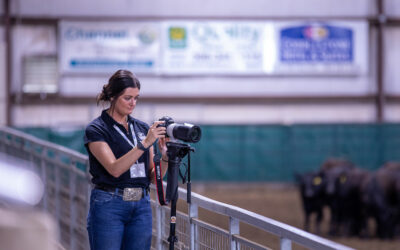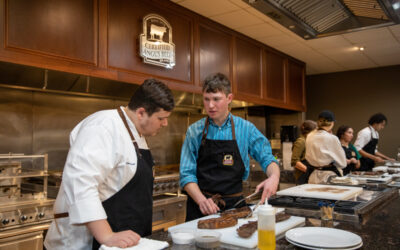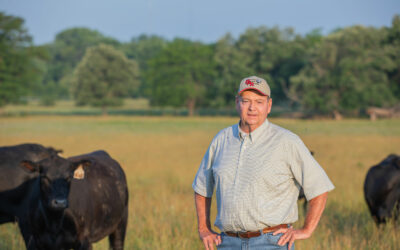
Countryside time capsules
Barns reveal the past, provide a consistent presence
by Nicole Lane Erceg
2020
Generations come and go, but across the country farms and ranches, lone oak trees, sturdy stone fences and century-old barns—they’ve seen it all.
Many have changed hands over the years, but still give clues to their earliest uses. For the barns that dot Angus operations all over rural America, it’s often a combination of art and function that have lengthened their lifespan. People saved them for a reason.
The following two stories are excerpts from the book, “Sheltering Generations: The American Barn,” published last year. They’re the tales of two families who bought a piece of the past and made it their own.

A home among the homesteads
If Rich Peterson were still alive, his son Alex would be sure to ask a little more about the Sioux and Cheyenne Indian camps on the nearby Republican River. He’d listen a little closer when the older generation retold of the cattle drives headed north to Ogallala across their land.
“It was my dad, and these two or three old guys that were in Haigler, who since passed away, that pretty much knew everything,” says Alex Peterson, of Windmill Angus. But it’s been almost 20 years, and the cattleman wasn’t interested in history back then.
“I never sat down with them and just dug for information,” Peterson says. “Once that’s gone, you know some stories, but that’s about it.”
If only those pastures could talk. Ruts are still visible from the wagon trains during the days of the Deadwood Gold Rush. While checking cows, Peterson finds the remains of early homesteads, often just broken foundations and some glass. Caved-in dugouts give glimpses of pioneers who didn’t stick it out on their homestead claim.
The family has patched together hand-me-down tales with research from the area community college and history books. A map dated 1873 shows General Custer’s camp just a half mile north of Alex and his wife Michelle’s house. The arrowheads and old spurs collected over the years prove it’s true.

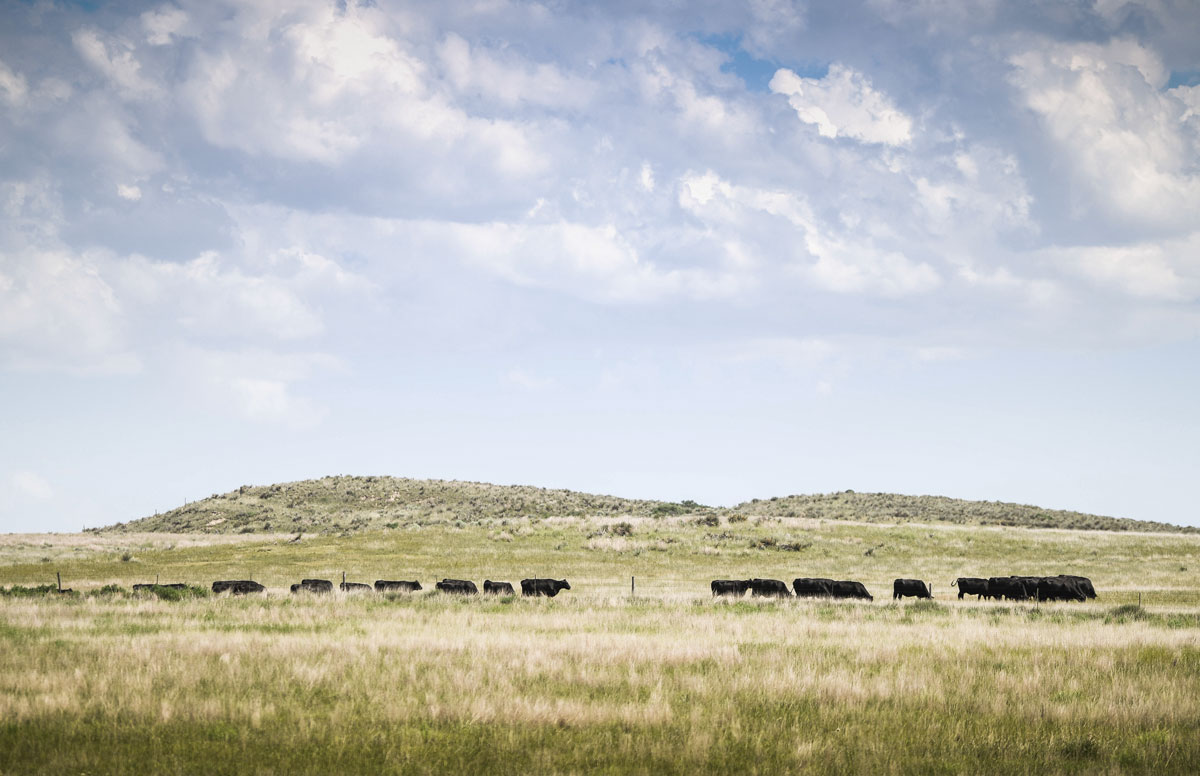
The Peterson family history with the ranch starts in 1959, when Alex’s parents brought down their Angus herd, and started making a living in Dundy County.
The barn was the first to get a facelift.
“They put a new foundation under it and kept it in really good shape,” Peterson says, noting the workmanship and sweat that went into building it are still apparent. “There’s a reason a lot of people haven’t kept old barns up. It’s not cost effective.”
But they’ve never considered “letting it go.”
“It’s always been an integral part of the ranch,” he says. Locals give directions based on the landmark.
They’re there every day. They work in it, around it and on it.
Just across the farmyard sits its match, the house built in 1897. What started out as a simple square design has been added on to five times. Peterson and his three siblings were raised in that house. His own children have memories there.
The lath and plaster walls never revealed a gold store or treasure under the floor boards, but instead give clues to the real treasure that is rural Nebraska: a peek at the tenacity it took to settle in a place that gets less than 15 of inches of rain in a year.
A remodel reveals dirt from the Dust Bowl, when the population started to dwindle. Today, the county’s 951 square miles are home to no more than 2,000 people, 147 of them in Haigler. They’re 85 miles from a Walmart and have a hard time finding skilled labor on the ranch.
It’s both the challenge and the charm of where he lives, Peterson says, but it’ll always be home.
It’s where his brother died in a ranch accident, where he proposed to his wife and where he’s made a life raising hardy cattle.
It’s his history.


Not everybody’s dream
The original land grant came straight from the King of England.
The Wincrest Angus barn was born of the farm that surrounded it. Timber logged on the property, pulled up the hill with draft horses and milled next door to the building site.
Dairy cattle were the main early residents, and their owners were happy to get electricity in the 1940s.
The black wooden barn looks much the same today, but the landscape surrounding it has changed. Subdivisions crowd in on all sides.
For Sam and Betty Widener, it was something of an investment property. It’s one they could sell for development at any time, but a reverence for history keeps it in the family and as an anchor along the interstate.
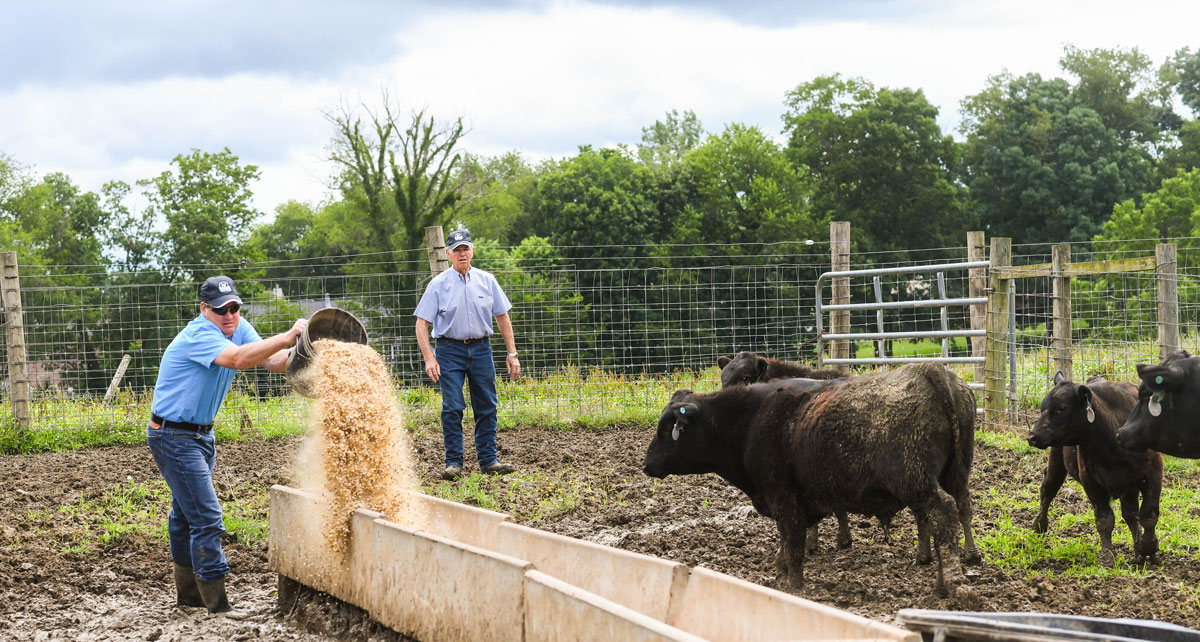
It’s tradition that it stay as a reminder of what was, while the world goes on doing what it will all around them. Even when construction of I-26 threatened to end the barn’s existence in 1967, the Crouch family, owners before the Wideners, saved it with a short move out of the way.
There it still stands, as 63,000 vehicles pass by daily.
“The property is too expensive to farm, yet we still do,” says Sam Widener. He and Betty bought the place from family friends in the 1980s. They’d always had a little land, but it became the place where they started their Angus herd with a 4-H heifer for their son Chris.
Wincrest Angus has grown from that single animal to an almost-full-time side business, one that finds the wholesale flooring distributors leaving the family operation after office hours to work together on farmers’ hours.
“Our joke is we have to work at least 45 hours a week to be able to farm after five and all day on Saturday,” Widener says.
It’s Sam and Betty, alongside son Chris and daughter Kim Edwards, making calls, loading trucks for delivery, following up on sales and keeping books.
Then, they leave work to do more work. It’s not everybody’s dream, but it’s something Sam opts for over retirement.
“It’s best to keep going on as a long as you can,” the cattleman says.
They cut and bale hay, breed cows and sell calves. It’s not without its challenges, but Sam and Chris do it for the change in scenery and pace.
“If I have a bad day at the office, I can go to one of the farms and walk across the hill and find a new calf, and when I go home the pressure of the day is gone,” he says.
Worth the investment, in more ways than one.
These are just two of the 40 stories featured in “Sheltering Generations: The American Barn.” Every dollar of sales from the coffee-table book benefits the Rural Relief Fund, which will allow the Certified Angus Beef ® brand to coordinate a response when disaster strikes our farming and ranching communities. Visit https://shop.certifiedangusbeef.com/ to purchase your copy for $19.95.
Originally published in the Angus Journal.
You may also like
High-Quality Beef and Experiences Promised with Summer Internship
Internships help students take skills learned in the classroom and apply it before graduation or entering the workforce. Last summer’s interns described their experiences with CAB as engaging, fun, empowering valuable and challenging. Read more about these internship opportunities!
Connecting With Consumers at the Meat Case
CAB is committed to prioritizing consumers’ evolving expectations for high-quality beef, sustainability and connecting the next generation. Explore our Ranch to Table program and learn how we connect the next generation of ranchers and culinarians for a brighter, more sustainable future for the beef industry.
Serving His Passion
Sharing the love and passion for Angus cow and Angus family, Jim Brinkley completes his term as CAB Board of Director after a year invested in the future of the beef industry. As chairman, he saw his own thoughts an leadership skills evolve as discussion topics brought new ideas to life in the board room.

